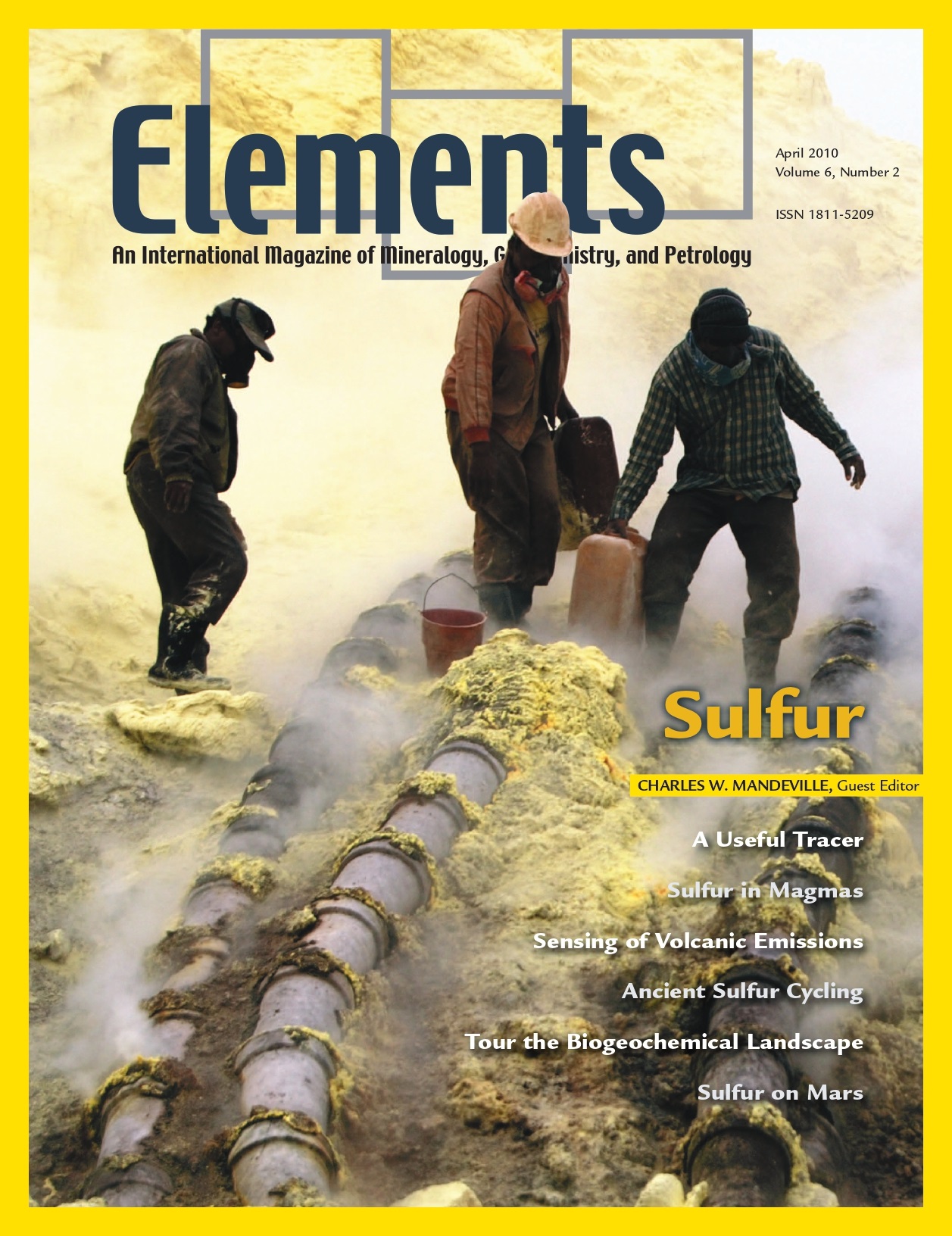
Bentonites – Versatile Clays, April 2009, Vol. 5, No. 2
June 28, 2024
Cosmochemistry, February 2011, Vol. 7, No. 1
June 28, 2024Sulfur, April 2010, Vol. 6, No. 2
$20.00
This issue of Elements focuses on the geochemistry of sulfur in high-temperature, low-temperature, and biogenically mediated processes over a wide range of scales, environments, and time intervals. Sulfur’s multiple valence states (S2to S6+) allow for its participation in a large variety of geochemical and biogeochemical processes.
Sulfur
April 2010, Vol. 6, No. 2
This issue of Elements focuses on the geochemistry of sulfur in high-temperature, low-temperature, and biogenically mediated processes over a wide range of scales, environments, and time intervals. Sulfur’s multiple valence states (S2to S6+) allow for its participation in a large variety of geochemical and biogeochemical processes. Sulfur may be one of the light elements contained in the Earth’s core and may have been crucial in core formation. Sulfur is an essential component in all life on Earth. Sulfur geochemistry continues to be used in delineating the early evolution of Earth’s atmosphere and hydrosphere, as a monitor of volcanic SO2 and H2S, and as a tracer of anthropogenic sources. Recent advances in the use of multiple sulfur isotopes (32S, 33S, 34S, and 36S) and in situ isotopic measurements will allow sulfur stable isotopes to develop as vital tracers in the Earth and planetary sciences, with applications to inorganic and biogenic processes.
Why You’ll Love Elements Magazine:
- Expert Contributors: Articles written by renowned researchers in the field of geoscience.
- Engaging Content: Join a community of readers who are passionate about Elements.
- Exceptional Quality: Each issue is printed on high-quality paper with stunning visuals and detailed illustrations that bring complex scientific concepts to life.
Order your copy of the April 2010 issue of Elements magazine today and explore the complexities of sulfur.
Related products
-
Toxic Metals In The Environment: The Role Of Surfaces, September 2005, Vol. 1, No. 4
$20.00Metals are prevalent in the environment. They are derived from both natural and anthropogenic sources.
-
Early Earth, August 2006, Vol. 2, No. 4
$20.00The earliest Earth was a strange inhospitable world, yet transitions occurred culminating in the evolution of life within the first billion years. The preservation of a sparse and ambiguous rock record has encouraged debate.
-
Supervolcanoes, February 2008, Vol. 4, No. 1
$20.00Explosive super-eruptions from large volume, shallow magma systems lead to enormous and devastating pyroclastic flows, the formation of gigantic collapse calderas, and deposition of volcanic ash over continent-sized areas. Recognition that future eruptions from these “supervolcanoes” will undoubtedly have severe impacts on society—and perhaps on life itself—has led to recent public and media interest.




